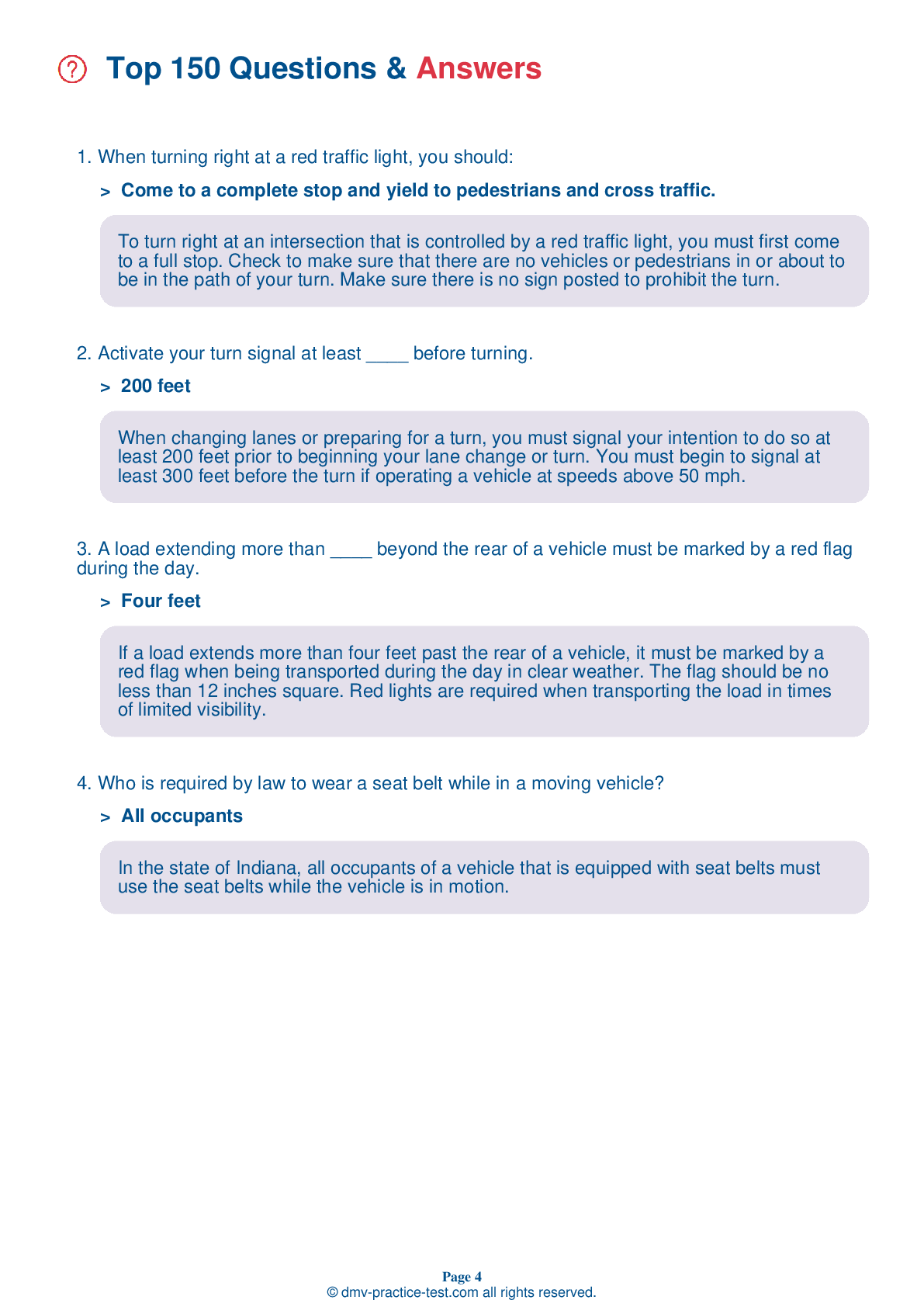FREE Indiana DMV Practice Test #21 Page 3 of 5
This set of Indiana DMV practise tests has been updated for January 2025. It includes questions based on the Indiana Driver Handbook's most significant traffic signals and laws for 2025. Use actual questions that are very similar (often identical!) to the DMV driving permit test and driver's licence exam to study for the DMV driving permit test and driver's licence exam.
On the practise exam, each question gets a tip and explanation to help you remember the concepts. The written component of the official Indiana DMV test will include questions about traffic rules, traffic signs, and driving statutes, as well as information from the Driver Handbook.
To obtain a passing grade, you must correctly answer 44 of the 50 questions. Take our DMV practise exam to help you prepare for your Indiana instruction permit or driver's licence.
The DMV exam is available in several languages.
Using any kind of testing assistance will result in an automatic fail, and the DMV may take additional action against your driver's licence, so stay away from it.
17 . When driving in bad weather, drivers should:
When driving on wet roads, drivers should increase their following distance.
18 . This road sign means:

These signs indicate that the road curves to the right ahead and that drivers should slow down to the safe speed indicated (in this case, 35 mph).
19 . When is it illegal to drive below the speed limit?
It is illegal to drive so slowly that you disrupt the normal flow of traffic. You may receive a citation for driving too slowly.
20 . Which of the following is true regarding seat belts and child restraints in vehicles?
Before you drive, always fasten your seat belt and make sure all your passengers are using seat belts or child restraints. Studies have shown that if you use seat belts, your chances of being hurt or killed in a traffic crash are greatly reduced. Children age 12 and under should always ride properly restrained in a rear seat. Never put a rear-facing infant restraint in the front seat of a vehicle with a front passenger airbag.
21 . When approaching a school bus stopped with its stop arm extended, drivers should:
When approaching a stopped school bus that is using its stop signal, a driver is required to come to a complete stop. They should not proceed until the stop arm is withdrawn.
22 . You are driving on the roadway and hear a siren behind you. You should:
When you hear the siren or see the flashing lights of an emergency vehicle coming from behind your vehicle, you must create a clear path for the emergency vehicle and stop. Reduce your speed and safely pull over to the side of the road. If the emergency vehicle is directly behind your vehicle when you are in heavy traffic, keep moving slowly until you can get out of its way.
23 . When you park uphill on a street with a curb:
When parking on an incline where there is a curb, you should turn your wheels sharply to the left, away from the curb. This way, if your brakes fail, your vehicle will not roll into traffic.
24 . What is a "No zone?"
"No zones" are the large blind spots around trucks and other large vehicles. Drivers of smaller vehicles should avoid lingering in "No zones."
25 . What does alcohol do to your driving skills and judgement?
Alcohol negatively affects many skills needed for safe driving, including your reaction time and ability to see clearly. It can also harm your judgment of speed and distance, lower your inhibitions, and make you more prone to taking chances.
26 . You are driving when it begins to rain. You should:
When heavy rain reduces visibility, reduce your speed. Turn on your headlights so other drivers can see your vehicle. If the rain is so heavy that you are unable to see clearly, drive onto the shoulder and stop until the rain lets up.
27 . This road sign means:




